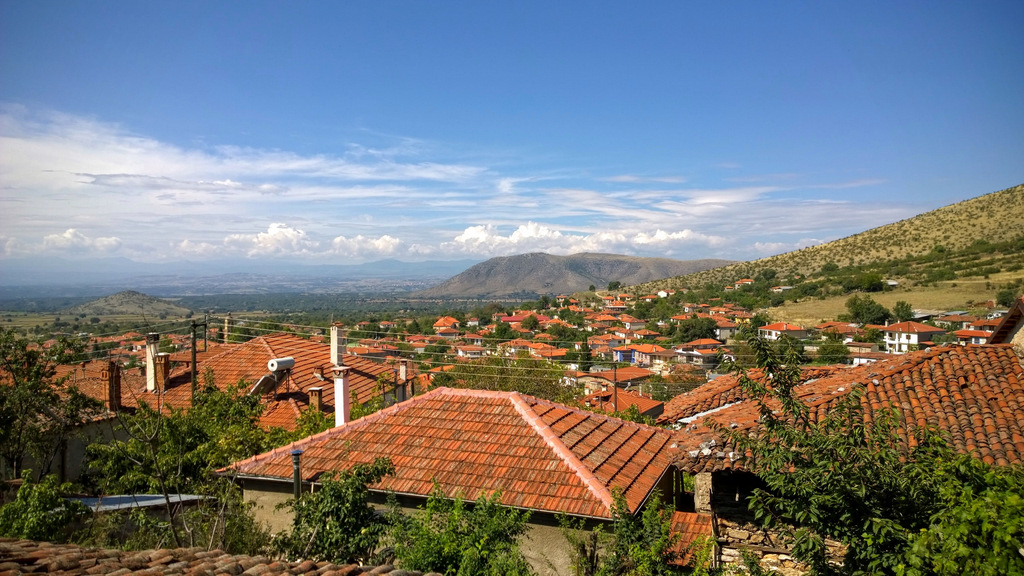Leave behind the concrete monster, let go, get some space, breathe… A Greek Urbanite’s Summer Dream. Two thirds of the Greek population live tightly packed into matchbox-size flats in big cities. In a traditionally agricultural country with no heavy industry – other than tourism – how did this come to be?
It goes back to the aftermath of WWII when Europeans, as indeed most of the world, started picking up the pieces and rebuilding what was left of their lives. In Northern Europe, heavily industrialised despite – or because of – the war, reconstruction and development saw rapid growth. Faced with shortages in native workforce, they turned to the poorer South for cheap labour reinforcements; and the South was only too happy to oblige.
This created a wave of migration from the rural South to the industrialized North, or even farther away, the U.S, Canada, South America and Australia. Greece was among the countries facing mass exodus, doubly suffering by the Civil War that followed WWII. It was mainly young people from poor, rural areas that decided to emigrate. And those who couldn’t go very far or weren’t willing to live in a foreign country, moved to large urban centres within Greece – mainly Athens and Thessaloniki.
Thus the urban areas grew disproportionately dense while the rural ones kept shrinking. In the course of 15 years, between the 50’s and 70’s, around 1,5 million people quit their farmland for the big city, either in Greece or abroad.
Not surprisingly, every family tree in Greece is sure to include branches that, somewhere down the line, follow a provincial route. Responding to ”Where do you come from?”, a question commonly asked among Greeks, absolutely every naturalized urbanite, will point away from their place of residence and towards the province – if not further abroad.
Take, for example, my family: the only members born in Thessaloniki were my father, my sister and I. My mother was brought there as a baby from a tiny village in Central Macedonia. All my grandparents hail from small villages in various regions of Northern Greece. Some roots can be traced as far as Central Anatolia, in the region of Karaman.
For the record, the Karamanlis (Greek: Καραμανλήδες) were Greek-Orthodox Christians that had adopted Turkish as their native language. They lived in Central Anatolia until the 1923 population exchange between Greece and Turkey, another sorry story involving the uprooting of about 2 million people because of their religious beliefs.
My partner too: born in Athens to an Armenian father whose family had emigrated to Greece following the Armenian Genocide, and a Greek mother hailing from the mountainous West Macedonian region, whose rebellious spirit had brought her to Athens at a very young age.
It was this village in West Macedonia that we visited last year in September, during our trip to Thessaloniki.
Eratyra (Greek: Εράτυρα), built at 700-800m above sea level, about an hour’s drive from Thessaloniki. Its 1000 residents (double the number in summer) are mainly sheep & goat breeders or well-off pensioners returning from abroad. A lively village with a long history dating back to 700 b.c.
It was a very short visit, but within a day we saw wonderful old houses built of stone and wood, met hospitable people – curious as ever to meet new visitors, woke up to crisp mountain air, spied the lady tending her bees in the garden across from ours; we paid respects to our ancestors, got soaked in a torrential summer rain and admired the unique wooden temple in the Church of St. George, built in 1844 in the centre of the village.

Seems like an oddity but, actually, a common sight in many a Greek village: modern villas built by pensioners returning from abroad – the reverse immigration phenomenon
Reconnecting with one’s roots is refreshing but only if it comes in small amounts. Clearly an urbanite, I wouldn’t last very long away from the soothing anonymity of the big city.
Eratyra is easily reached by car or public transportation (bus). If you are curious, you may find more info about Eratyra, its history and culture, on this website: www.eratyra.gr, complete with many more photos. What’s more, it is fully translated in English!
Shared photo credits (Lia & Konstantinos)
11-12 September 2014


















